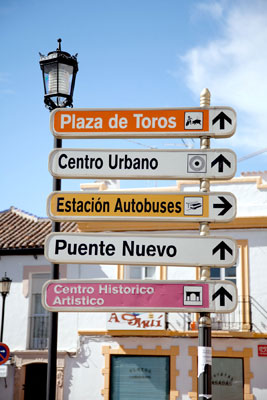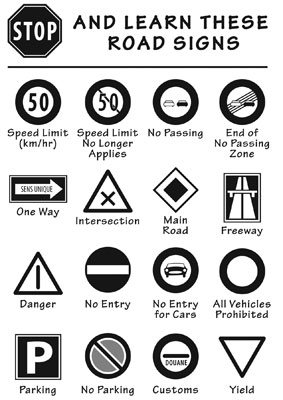Road trip! Road trip!
This item appears on page 57 of the March 2013 issue.
There’s plenty to know before you drive a car in Europe, where road signs, fuel names and hidden traffic cameras can be intimidating to tourists. But driving in Europe is really only a problem for those who make it one.
Admittedly, some places are easier to handle than others. The British Isles have the advantage of no language barrier and fine roads. And after one near-head-on collision scares the bloody heck out of you, you’ll have no trouble remembering which side of the road to drive on.
There are lots of good places for newbie drivers abroad. In Scandinavia, roads meander peacefully from village to village, hugging the lips of majestic fjords. Belgium and the Netherlands are easy on four wheels, but be sure to yield to bikes; you’re outnumbered. Wannabe race car drivers enjoy Germany’s wonderfully engineered freeways, and driving down sunny Alpine valleys in Switzerland and Austria will have you yodeling in auto ecstasy.
Some travelers obsess about the possibility of a car accident while driving in Europe, but you’re no more likely to have an accident there than you are at home. And any mishap will most likely be the result of a tight squeeze in a parking garage (ask for a small car). Whether your rental car is damaged or just gets a flat tire, it likely comes with 24-hour emergency roadside assistance.
But be prepared. There is some truth to the myth of the daredevil European driver. Italians, in particular, tend to make up their own rules. In Rome, red lights are considered “discretionary.” On one trip, my cabbie went through three red lights. White-knuckled, I asked, “Scusi. Do you see red lights?”
He said, “When I come to light, I look. If no cars come, I go through. If policeman sees no cars, no problema. He agrees: red light stupido.”
The moral of the story? Drive defensively.
All of Europe uses the same simple set of road symbols. Learn them. It will reduce your stress level considerably if you can instantly recognize the sign for ‘No parking,’ ‘Danger’ or ‘All vehicles prohibited.’
For the rules of the road in the country you’re visiting, check www.travel.state.gov; click “International Travel,” specify your country of choice, then click “Traffic Safety and Road Conditions.”
When you pick up your rental car, confirm the type of gas your car needs. In some countries, pumps are color-coded to help you find the right fuel. Keep the terms straight: unleaded gas is called petrol or benzine, while diesel is known as gasoil or gasol.
In bigger towns and at major sights, you’ll probably need to pay for parking (European pay lots are typically well patrolled). If you’re not sure how to pay, just watch and imitate the drivers around you. Parking garages usually require that you take a ticket with you and pay at a machine on the way back to the car. In smaller lots, look for a machine selling time, plug in a few euros, push the button and get a receipt that you’ll display on your dash.
Wherever you drive, be aware that Big Brother might be watching. In many countries, traffic is monitored by automatic cameras that check car speed, click photos and send speeders tickets by mail.
In many Italian city centers, car traffic is banned altogether, and you should never drive or park anywhere you see signs reading ‘Zona Traffico Limitato,’ or ‘ZTL’ (often shown above a red circle). If you do, even briefly by accident, your license plate will be photographed and a hefty ticket will be waiting for you at home.
Even if you’re navigating with a GPS device, it’s essential to have a good reference map. I once made the mistake of driving from the Bavarian Alps to Munich with only my GPS computer-voiced companion to guide me. Unfortunately, she didn’t know that the access road to the Autobahn was closed. A paper map would have led me to an alternate route much more quickly than my hunt-and-peck adventure.
Driving into unfamiliar places is easier than you might think, given that most European towns have signs directing you to the “Old Town” or the center. The tourist office, normally right downtown, will usually be clearly signposted. The tallest spire often marks the center of the Old Town; just drive toward it. To find your way out of town, look for the sign for “all directions” (‘Toutes directions,’ ‘Alle Richtungen’ and so on).
Most travelers who drive overseas come back bragging about their ultimate road trip. The independence of the open road is all about adventure and possibility. Behind the wheel, you’re totally free, going where you want, when you want. Start your engine!


